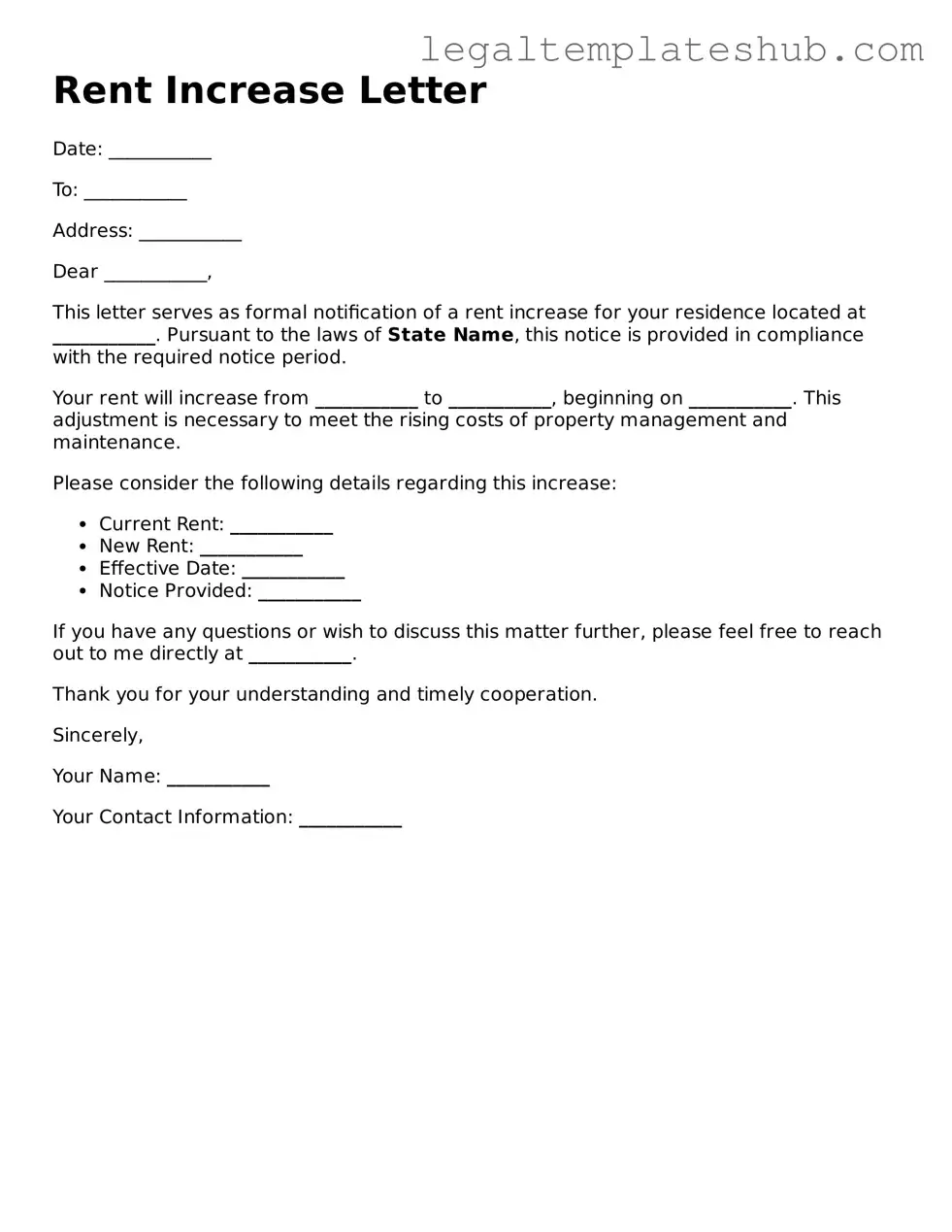Printable Rent Increase Letter Template
A Rent Increase Letter is a formal document that landlords use to notify tenants about an upcoming increase in rent. This letter outlines the new rental amount and the effective date of the increase, ensuring transparency and compliance with local regulations. Understanding how to properly fill out this form is essential for both landlords and tenants to maintain a positive rental relationship.
Ready to get started? Fill out the form by clicking the button below.
Access Editor
